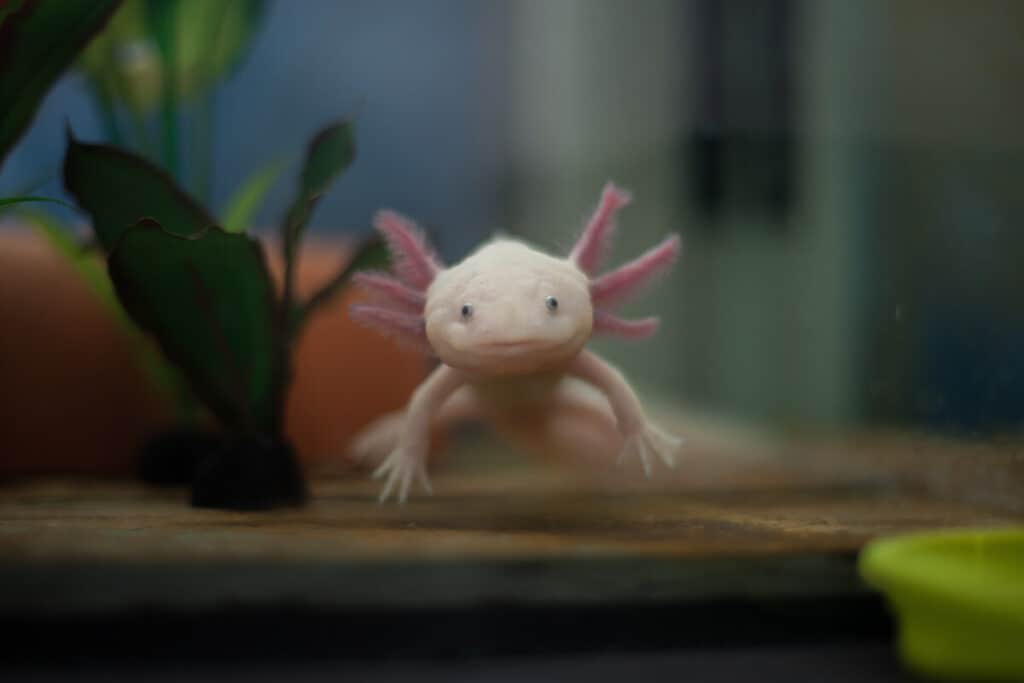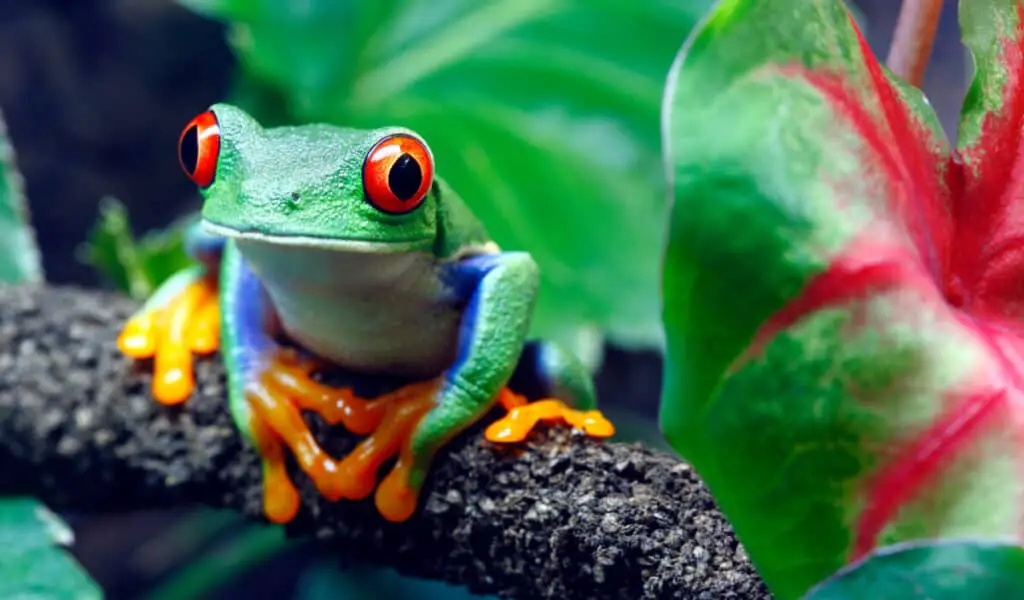Amphibians are fascinating creatures, and they require certain diets to stay healthy and happy. Many people are curious about what amphibians eat, and this article will answer that question. It will provide an overview of the dietary habits of amphibians, as well as offer some tips for feeding them.
Read on to learn more about what do amphibians eat!
Amphibians are unique animals that have adapted to life both in and out of water. They come in a variety of shapes, sizes and colors, but all require specific nutritional needs to survive. While their diets vary depending on the species, some common food sources include insects, worms, fish and even small mammals.
This article will explore these dietary habits in greater detail, so you can be sure your amphibian is getting the nutrition it needs.

Insects
Amphibians have an appetite for a variety of insects, including beetles, flies and crickets. They’ll also eat spiders, moths and butterflies if they come across them. These animals are important to amphibians as a food source and provide the necessary proteins, lipids and carbohydrates to keep them healthy.
Insects form the bulk of most amphibian diets, but they may also feed on small invertebrates like worms or termites. They will even consume other amphibians, such as tadpoles or juvenile frogs. Amphibians can sometimes be seen hunting in shallow water or along the edges of ponds where these creatures live.
Amphibians have been observed consuming larger prey items like mice or small birds if they can catch them. They may also supplement their diet with plant material if it is available in their environment.
Depending on their species and habitat, amphibians may take advantage of any food source that presents itself. With such a varied diet, amphibians are able to survive in a range of habitats around the world.
Worms
When it comes to the diet of amphibians, worms are a staple. These slimy invertebrates provide an essential source of protein and other nutrients that many species of amphibians need to survive.
But how do amphibians actually find and eat these worms? Well, depending on the species, they can employ several different strategies. The most common way is by visually spotting their wiggly prey. Some frog species, like the American bullfrogs, will wait until a worm passes by and then lunge forward with their powerful tongues to snatch their meal. Other amphibians use their sense of smell to locate and consume worms—for example, salamanders have been known to detect the earthworm’s slime trails as they make their way around the dirt or mud.
Not all worms are created equal in terms of nutrition for amphibians either; some species have evolved specifically to feed on certain types of earthworms. For instance, the giant African bullfrog (Pyxicephalus adspersus) has adapted its diet so that it only eats large earthworms that contain high levels of essential fatty acids in order to fuel its growth and reproductive success.
It is clear that worms form an important part in the diets of many amphibian species; from helping them find more efficient ways to hunt down prey, providing them with nutritional needs, or even allowing them to specialize in particular kinds of worms for survival—it’s easy to see why these slimy invertebrates make up such an important staple in any amphibian’s diet.
Fish
Amphibians have an even wider variety of food sources than worms. They can feed on both aquatic and terrestrial insects, crustaceans, mollusks, and small fish. On land, they will also eat spiders, centipedes, slugs and worms. Some amphibians have even been known to consume small mammals such as mice.
In addition to prey items found in nature, some species of amphibians may be fed with commercially available pet foods. This includes live or frozen insects like mealworms, crickets and earthworms as well as specially formulated pellets for aquatic frogs and newts.
It is important to research your specific species before deciding which type of food is most suitable for them. A varied diet including both natural prey items and commercially prepared food will ensure that your amphibian has all the nutrients it needs while giving it plenty of opportunity to hunt and exercise natural behaviors.
Small Mammals
Small mammals are a favorite food source for amphibians. They provide protein and other essential nutrients to these animals.
Frogs, toads, salamanders, and other amphibian species will happily feed on small rodents, such as mice and voles. In some cases, they may even eat smaller birds. Amphibians can catch these creatures easily due to their quick reflexes. They often use their long tongues to capture unsuspecting prey that is nearby.
Not only do small mammals provide nutrition, but they also give amphibians something to do—hunting is a very important part of their lives! Amphibians usually hunt at night when their prey is more active and easier to find. Hunting keeps them fit by providing them with exercise, allowing them to stay healthy and agile.
Without small mammals in the ecosystem, amphibians would have much fewer opportunities for food and exercise.
Plant Matter
The vibrant colors, slimy textures, and fascinating behaviors of amphibians make them captivating creatures. But what do they eat?
While amphibians have a wide variety of diets, their primary source of sustenance is plant matter. Plant matter can come in many forms, from fresh vegetation to decaying organic material. Most species of amphibian feed on a combination of the two.
Fresh vegetation might include leaves, stems, roots, and flowers; while decaying organic matter could be fungi or dead insects. Insects are especially important for certain amphibian species as they provide protein that vegetative sources lack.
Regardless of the form it takes, plant matter is an essential part of every amphibian’s diet. It not only provides the energy needed to move and grow but also essential nutrients necessary for survival in many habitats around the world. Without this vital food source, these incredible creatures would struggle to survive in their respective ecosystems.

Conclusion
Amphibians have a varied diet, depending on the species. They generally feed on insects, worms, fish, small mammals, and plant matter.
To summarize, amphibians are opportunistic eaters and will take advantage of any available food sources in order to survive. This ensures their survival and gives them the necessary energy for mating and reproduction.
As amphibians adapt to their environment, it’s important to remember that their diet can change over time. It’s essential that we work to protect these creatures so they can continue to thrive in our world.

